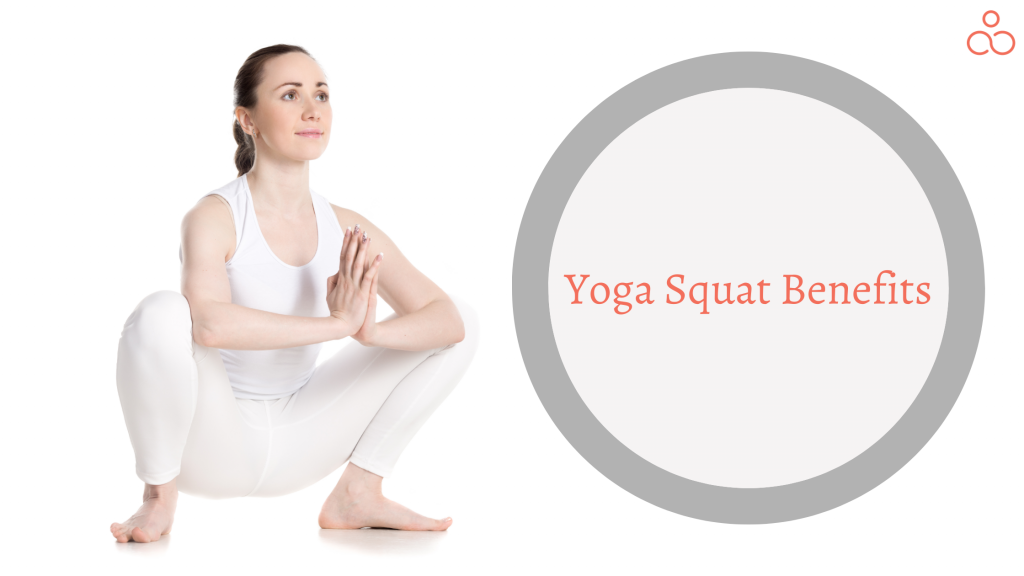Are you a yoga enthusiast? If so, you may be familiar with how each pose of yoga contributes to your overall health. Today we’ll focus on one particular pose: the yoga squat. This may seem simple, but it’s actually quite tricky to get right. To make sure you get the most out of it, you need to understand how to do it properly. Let’s take a deeper dive and learn more about yoga squat benefits.
What is a yoga squat?
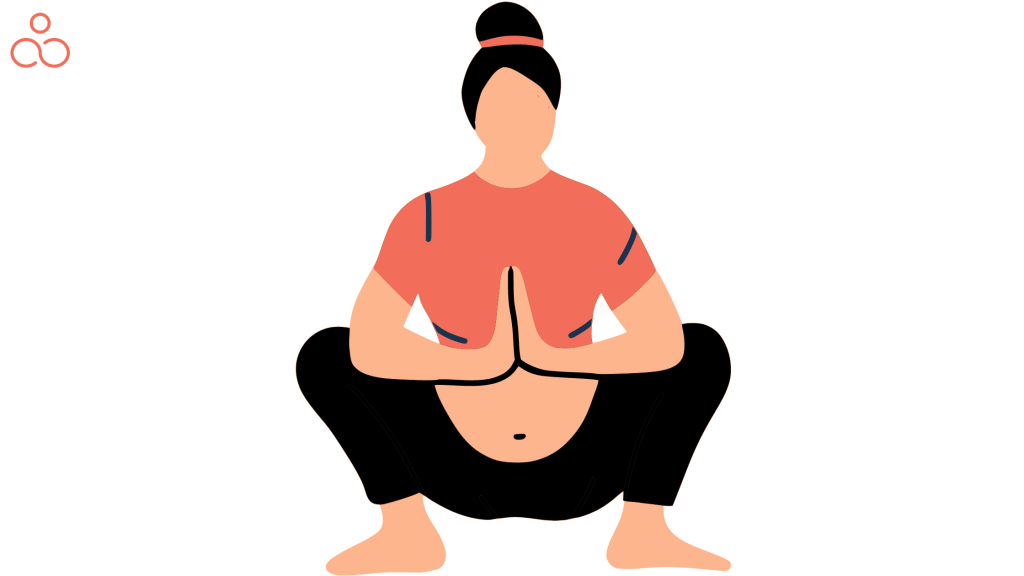
Yoga squat or garland pose or yogi squat in Sanskrit is known as Malasana. The practice of this exercise facilitates better functioning of your lower body by driving your energy downward. It is in a true sense beneficial as it strengthens your thighs, adds mobility to your ankles, and flexibility to your feet. Practicing yoga squat requires you to utilize the downright scale of motion of the legs by bending the knees fully until the pelvis is resting at the back of the heels. It is also a great hip opener that stretches the groin and glutes. Practicing yoga squats regularly makes your body robust. It contributes to your muscle gain. Being flexible is really important to practice yoga squats or else it would be difficult for you to reach a full squat depth. If you think you are not flexible enough to perform yoga squats then try to perform stretching as it will increase your flexibility to a great extent. Performing yoga squat pre and post-workout can also be a great choice as it will add mobility towards better lifting and stretch your muscles after your workout session.
Yoga squat benefits
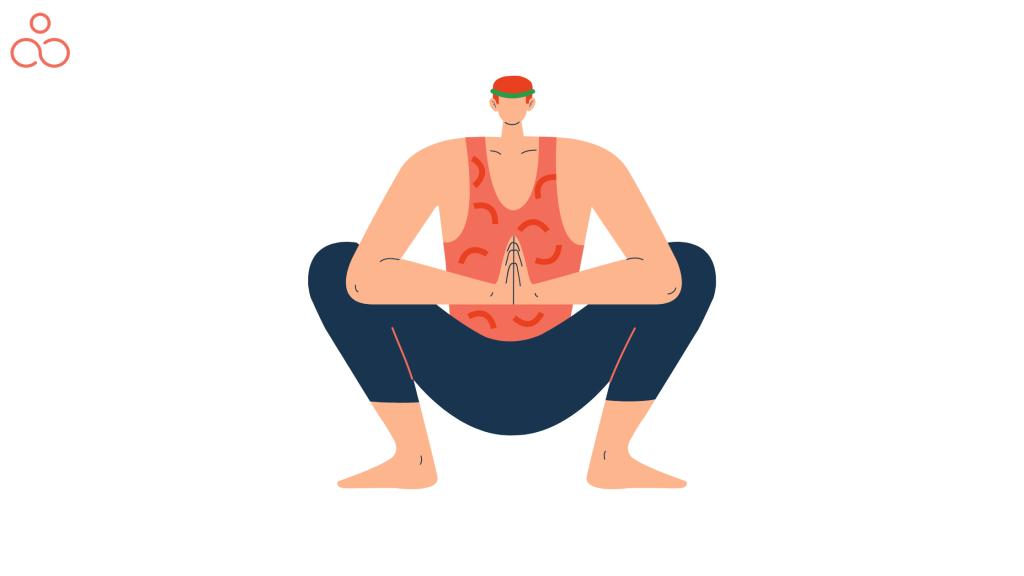
Flexibility and mobility are the most common and known benefits of yoga squatting. However, it is not only limited to these. Several other important benefits could be yielded from yoga squats. We have made an attempt to highlight these benefits to give you an insight into how yoga squats can be favorable to you.
Increased Level Of Flexibility
Pushing yourself just a bit further by lowering your hips slightly more with each passing practice will help you to increase your flexibility. Acquiring flexibility is important to perform yoga squats as it will enable you to achieve a greater scale of motion, and mobility and reduce the risk of injury while simultaneously improving your posture.
Increased Strength Of Lower Body
Squats are often used for lower body strengthening, focusing on the quadriceps, hamstrings, glutes, and calf muscles. By lowering in and standing up out of the yoga squat, you can help build these muscles while also recruiting your abdominals to keep your posture upright. Doing squats regularly can help to tone and strengthen the muscles of the legs, hips, and glutes. For those looking to reap the physical benefits of yoga, the squat is the perfect pose. By engaging your quadriceps, ankles, groin, and core, you can effectively stretch and strengthen these areas. With your feet wide apart, your core has to work harder to maintain balance, while the full version with your feet together emphasizes balance even more.
Decreased Lower Back Pain
Low back pain is acknowledged as a public health concern due to many adults having it. A couple of the root causes may be lack of movement and limited mobility of the hamstring and hip muscles. To reduce the pain, it is important to take measures to stretch and loosen the hip flexors, which will lead to better posture and an improved range of motion.
Increased Mobility Of Ankles
Despite its importance, many lifters don’t give much thought to their ankles. But having limber ankles provides numerous benefits and can help you avoid pain and injury. Tight calves and ankles can put a strain on the Achilles tendon, which can lead to severe pain or even surgery. To ensure your ankles are healthy, try performing the yoga squat regularly. This exercise stretches the ankles and calves, helping to keep them in top condition.
Improved Digestion
A powerful and limber lower body can be beneficial, yet consider a superior digestive system to go with it. Practicing a yoga squat routinely can help in escalating blood circulation to the kidneys and the intestines. It also increases the flexibility of the low back and pelvic floor, which helps in promoting the bladder and bowels.
Increased Energy Benefits
Malasana helps to ground and stabilize your energy, as well as provide a calming and cleansing effect. According to certain yoga practices, the energy of the pose can be revitalizing. The full version of the posture, in which your body is draped over your bent legs, encourages introspection and can be deeply tranquilizing. Furthermore, the deep squat works to stimulate optimal digestion and stimulate elimination – similar to being without a toilet when you are camping.
Beneficial During Pregnancy
Exercise can be incredibly advantageous for expecting mothers, provided they are given the green light by their physicians, and the yoga squat can help in achieving a more comfortable birth. Since this squat can be great in loosening up the hips and the groin area, it can help pregnant women begin to prepare themselves for delivery. Pursuing yoga squats during pregnancy is beneficial in reducing stress, depression, and anxiety. A study conducted in 2015 and published in Obstetrics and Gynecology demonstrated that Malasana and 26 other poses were advantageous for mothers-to-be with no apparent detriment to their unborn child.
Perfect For Newbie
Starting a new form of physical activity can be intimidating for a beginner, but yoga is an excellent place to start as it promotes strength and helps you control your movements. The yoga squat can be adapted to any level and can be modified by lessening the range of motion until you have more flexibility.
Groins Are Stretched
A lack of mobility in your lower body can lead to stiffness, pain, and discomfort in your back, hips, and knees. To counteract these effects, introducing Malasana into your routine can be incredibly beneficial. This posture stretches the groin, upper thighs, and hip flexors, allowing your body to become more flexible and strong. Practicing this pose daily should help you feel more agile and build confidence in your walk.
Proper Elimination of waste
If you’re in a yoga class, you may have heard your teacher call this pose the ‘Relieving Pose’. That’s because it helps clear out your system. Malasana gives your abdominal organs a toning and nurturing effect, it also helps to relax the puborectalis muscle, which helps with waste removal from the body.
Improved Posture
A great way to enhance your posture! This posture-correcting move is especially helpful if you spend most of your day sitting at a desk. It takes the pressure off your back and spine, and helps to realign your body into a straight and balanced stance. Doing the pose properly should give you an improved posture in no time!
Improved Tone And Shape
Not sure how to get rid of that extra bulk around your tummy, thighs, glutes and chest? Squat Pose is the answer! Not only does it strengthen the muscles in these areas, it also helps you tone and shape them. You’ll be able to work on your posture too, as it helps you keep your back straight and strong – just what you need to fix a hunchback!
Reduced Risk Of Injury
When you work out your lower body muscles, you’re setting yourself up for success. You’ll be able to move with confidence, proper form, balance, and posture and you’ll be less likely to get hurt. Plus, incorporating squats into your routine will beef up your tendons, ligaments, and bones, too.
Increased Blood Circulation
Yoga is a great way to get the blood moving around your body. With this pose, you can really make the most of your range of motion and get the oxygen to all your different muscles for a real circulation boost. That’s key for keeping everything ticking over!
How to master the yoga squat?
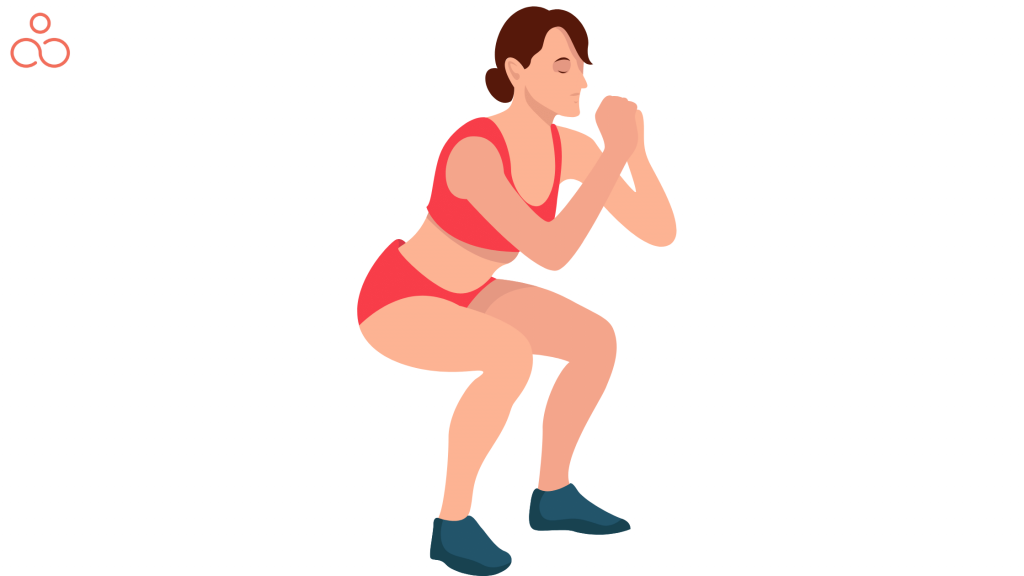
Looking for an easy way to stretch and strengthen your lower body? The yoga squat can help you out! Here’s how to do it right:
- Start off by standing tall with your feet shoulder-width apart.
- Then, bend your knees and drop your hips, just like you’re sitting in a chair.
- But don’t stop there – keep going until your tailbone is between your ankles.
- Now, press your elbows against your inner thighs to open up your hips and hold your hands together in a prayer position.
- Make sure you don’t slouch forward – keep your chest up and shoulders back!
- Finally, hold this squat pose for 30 seconds and you’re done!
How to incorporate yoga squats into your workout?
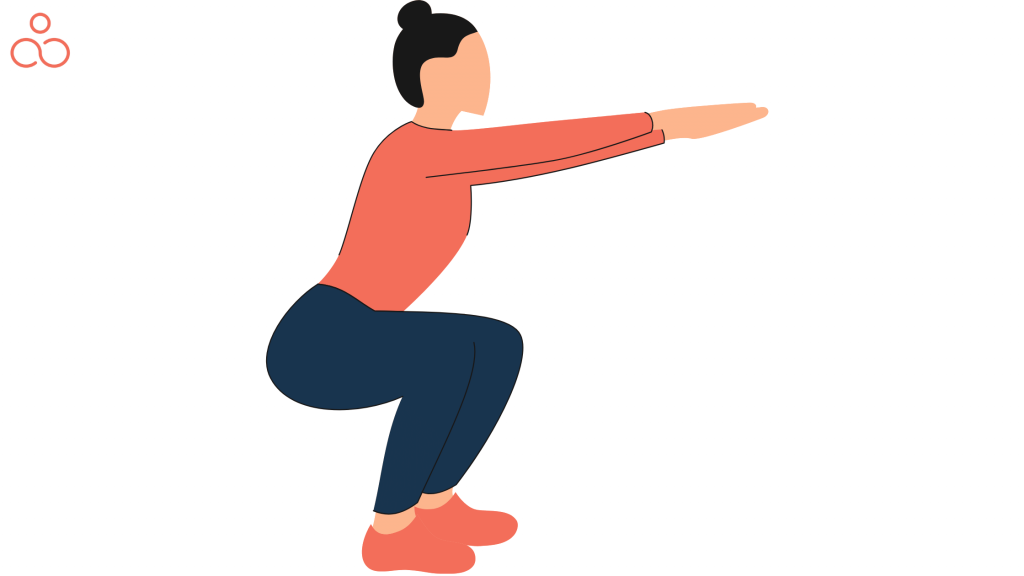
Yoga squat is perfect for boosting your performance, aiding recovery, and relieving tension. Before a heavy squat day or a long session of lunges, the yoga squat is the ideal way to prepare your hips, legs, and glutes. It’ll help you reach a deeper range of motion and make your workout more efficient and safer. And when the workout is done, don’t forget to stretch. The yoga squat is the perfect post-gym activity. It will help your body relax while lengthening your hips and glutes. If your hips are sore from sitting at a desk all day or your lower back is aching from doing yard work, the yoga squat is a great way to loosen up and relieve pain. Plus, since it’s a bodyweight exercise, you can do it anywhere. So, why not give it a try? Incorporating the yoga squat could help your lifts, improve your mobility, and even boost your digestion. Plus, who doesn’t want to be able to squat a little deeper?
Tips and tricks of yoga squat
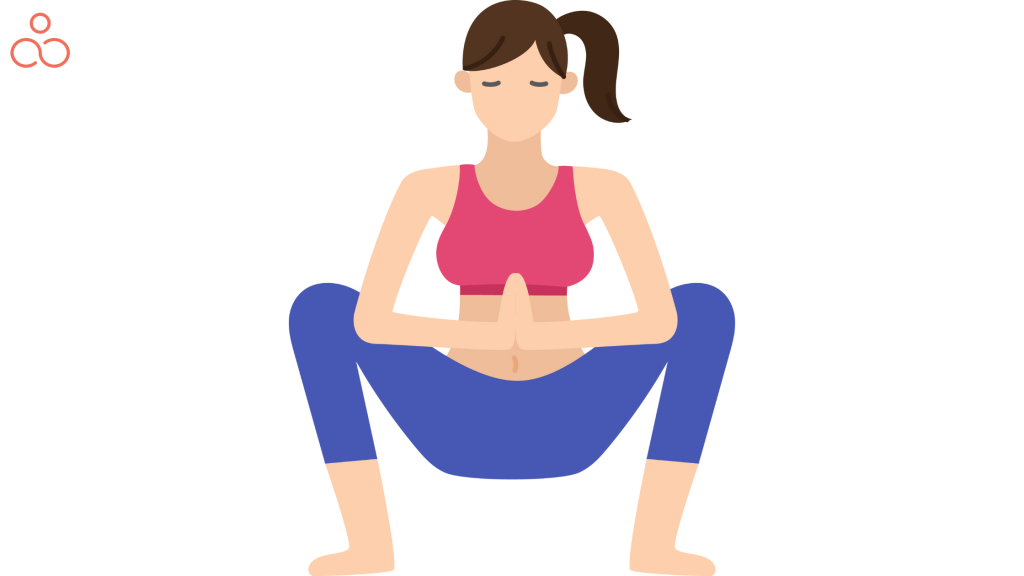
Feeling a bit stuck when it comes to getting into the perfect pose? Don’t worry – we’ve got your back. Here are a few tips that’ll help you nail Malasana.
- Supercharge your squat with a blanket! If you can’t quite reach the floor, fold or roll up a blanket and place it under your heels. This will give you that extra boost of support, and you’ll soon find it much easier to shift your weight back into your heels.
- Test your balance by lifting all ten of your toes off the mat. This will help you to hone your focus on balancing your body and strengthening your feet at the same time.
- Mix up your arm position by bringing your arms to the top of your legs and reaching them outward – this will help you to keep proper alignment and reach down to the ground.
- If you need extra support, move to a wall and begin to sit back like you’re in a chair. Focus on engaging your core and holding the pose for 1-3 minutes to build strength.
- Take your yoga squat to the next level by adding a twist! Widen your stance, and then reach the right hand to the ground, while lifting your left arm up. Hold for five breaths, then switch sides.
- Sit on a block if your knees need a bit of extra care. This variation of the yogi squat is your best bet. You’ll still benefit from the increased space in the lower back and chest while having the added support of a block. To set it up, just place the block at the height you find most comfortable.
- To make Malasana more comfortable, try putting a block or a rolled-up blanket under your forehead. This will prevent you from straining your neck.
- Stick with it! To get the most out of your yoga squat, you need to practice consistently. You could add it to your yoga practice or just take a few minutes each day to hold the pose. Instead of sitting down, why not have a go at the yoga squat next time you’re trying to find a nice way to pass your leisure time. Take it slow and make your yoga squat truly yours. With time and dedication, you’ll soon find the best way to practice this pose.
Yoga squat variations
Varying the standard squat will help you work different muscles. It also keeps exercise engaging, so you don’t get bored with performing the same motion over and over again. Before you attempt any alternate squat exercises, make sure you have a good grasp on the main squat. These movements are more difficult and require greater strength, agility, and core control.
- For a challenge, try to keep your feet and legs together as you squat. This pose is a great way to strengthen your lower body, but it’s more difficult to balance.
- For a bit of a spinal twist, wrap your right arm around the front of your right leg, bent, and bring your left arm around your back, clasping your hands by your right hip. Then switch sides and repeat.
- To get into the full Malasana, start in the variation above. Reach your arms forward, between your legs, and place your palms flat on the ground. Lean forward between your legs and bend down, until your forehead rests on the ground. It takes practice, but the rewards are worth it.
What muscles do yoga squat work?
One exercise that can test the limits of your muscles is the squat. The primary muscles used in this multi-joint exercise are in your lower body, including your glutes, quads, hamstrings, groin, hip flexors, and calves. You’ll also be engaging your core muscles, such as the rectus abdominis, obliques, transverse abdominis, and erector spinae. If you do a back or overhead squat, you’ll be working your shoulders, arms, chest, and back, too. All in all, the squat is a great way to get a full-body workout in one simple move.
How many calories can you burn through yoga squats?
Squats top the list of exercises that torch the most calories. That’s because lower body workouts require more energy than upper body workouts like bicep curls. A single squat of moderate intensity can burn 0.32 calories, meaning you’ll burn roughly 8 calories each minute you do a normal-intensity squat. On average, 25 squats are done in a minute, which means that 100 squats will burn 32 calories. Doing a single squat with moderate intensity will give you 0.32 calories of energy burned, with approximately 8 calories lost each minute of typical intensity squats. Generally, 25 squats can be done in a minute, which therefore means that 100 squats will burn 32 calories. But the exact amount of calories that yoga squat burns varies depending on various factors. The precise number of calories you burn during your squats will differ based on their metabolic equivalent (MET). MET is a unit used to measure the energy output of whatever activity you do. It’s calculated by dividing the rate of energy you use during a workout by the rate of energy you use at rest. A person doing a moderate level exercise may burn fewer calories than someone else doing the same workout. This is due to the connection between your body weight and the MET of the workout.
Unleash the Power of the Yogi Squat in Your Workouts
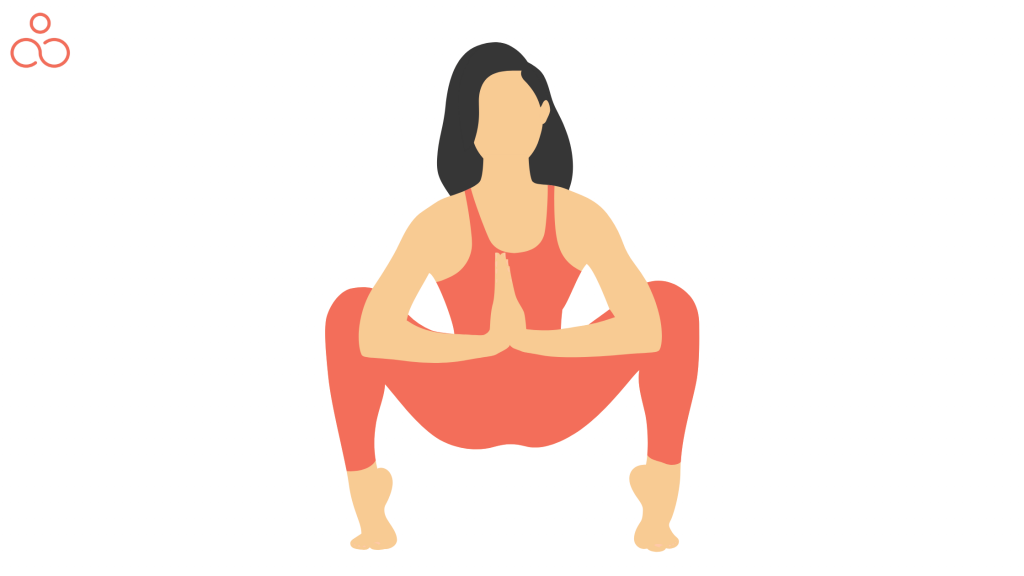
Looking to add an extra oomph to your workouts? Why not add yoga squats and make it even better? Perfect for spicing up your routine, this exercise is sure to give you a good sweat. Here are a few ideas to spice up your workout and get those creative juices flowing.
Utilize the Yoga Squat as a Post-Workout Stretch
If you’re looking to up your flexibility, hit the mat after your workout. Doing static stretching when your body is already warmed up is the way to go. You’ll see a greater improvement in your flexibility if you opt for a post-workout yoga sesh instead of before. And what better way to relax your body and get it ready for your next session than with the Yoga Squat stretch? This fun and creative stretch routine is the perfect way to make sure your muscles are properly released and ready to rock once you hit the gym again. So don’t forget to take a few minutes after your workout to Yogi Squat!
Utilize the yoga squat during a yoga workout
Yoga is an awesome way to boost your strength, increase your flexibility and chill out. And the Yogi Squat is the perfect pose to incorporate into your practice. Get ready to get your sweat on as you take your yoga routine to the next level!
Utilize Yoga Squat in your strength workouts
Squats can be your secret weapon to get you the wow-factor! They offer a complete body workout that strengthens you, helps burn calories, and even prevents injuries. Strengthen your core and enhance your balance and posture with the yogi squat. For extra gains, combine it with other exercises to bulk up and build strength. Try adding a bicep curl for an extra stretch for your hips and a double-whammy on your legs and arms!
Who Should Not Do Yoga Squats and What Are the Contraindications?
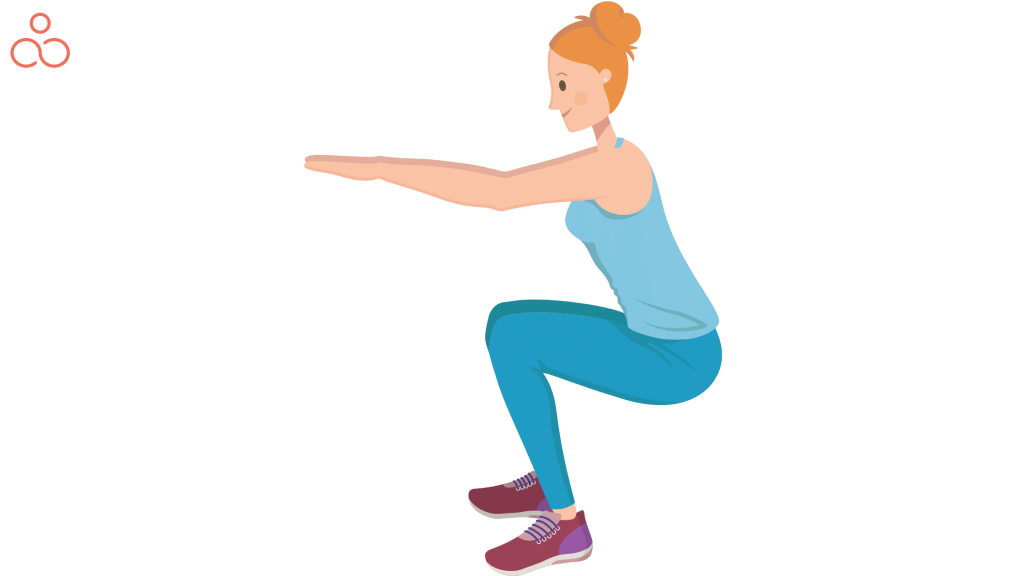
- Yoga squats may be daunting for the beginners, but they can be an incredibly rewarding pose. Just remember to be mindful of your body and not push yourself too hard. If you experience any discomfort during the pose, stop right away.
- If you suffer from any health conditions, like a hernia, heart condition or hypertension, please consult your doctor before attempting this pose. Otherwise, it could exacerbate your existing health issues.
- Pregnant women should use caution if deciding to do intense yoga squats. It is true that pregnant women should definitely get their yoga on, but those in the first and second trimester should avoid this asana due to the increased pressure on the abdominal area. This pose can put extra strain on the baby and uterus and should only be done if okayed by your gynecologist. If you’re pregnant, always consult a medical professional before doing this pose.
- While Yoga Squat can be quite beneficial, it does come with a few rare downsides – namely, joint pain. So, if you’re experiencing any kind of ache in the knees or hips, it’s best to take care when doing the pose because it can put extra pressure on those areas and make existing issues worse.
- If you’re dealing with any lower back pain it’s important to understand that Yoga squats can be tricky. If you have experienced recent or long-term lower back or knee problems, ligament damage, knee arthritis, weak bone density, serious sciatica, or any other discomforting or painful condition then you should stay away from this pose. 6. If your feet or knee placements are off or you don’t lift your body correctly, it can have a negative effect. That’s why it’s always a good idea to practice this pose under the guidance of an expert.
- Those recovering from injuries in the shoulders, wrists, elbows, rib cage, lower back, hips, or pelvis, or who have had abdominal surgery should stay away from this pose, as it places quite a bit of strain on the knees and ankles. Likewise, those who have had knee or ankle injuries should not do this pose.
- For those who are unable to lower their heels due to lack of flexibility, blocks or folded blankets under the hips and heels should be utilized. People suffering from dizziness, vertigo, or nausea should refrain from this pose. Individuals with restricted hips or groins can benefit from hip-opening exercises.
- Senior citizens should take things slow and steady. For seniors, the knees and ankles may be weak and doing this pose could cause damage.
- As for athletes who’ve just finished a run, this pose isn’t the best idea. The pressure on the ankles and calves after running could be too much.
- Yoga teachers should take account of their students’ capacity and be aware of their limitations. After close monitoring of each student they must take it accordingly to avoid the risk of injury.
FAQ’s
Why am I struggling with the Yoga Squat?
Don’t sweat it! It may be because your feet and ankles aren’t in the right spot, or because you’re having a hard time with flexibility in your hip flexors, knees, calves, or achilles tendons. It’s important to keep in mind that a lot of parts of your body are working together in this pose, and if one section is weak, others might make up for it, which can be more detrimental.
How much time should I spend doing yoga squatting?
Doing a daily session of yoga squat in the morning is a great way to get your digestive system running smoothly. It increases your blood circulation in the pelvic area. Aim for 30 seconds to 1 minute each day.
Should I really do yoga squats while pregnant?
Squatting can help open up your pelvis, creating more space for your little one to pass through the birth canal. Additionally, it might make pushing a little easier when it’s time. If you want to do some squats, you can use a sturdy chair or squatting bar on the birthing bed for support. You can also squat against a wall if that’s more your style. But keep one thing in mind when engaging in any activity, pay close attention to your body and stop if any activity becomes uncomfortable.
When is yoga squat not appropriate?
If you have a knee or ankle problem, then yoga squatting is probably not the best pose for you. The posture also puts a lot of strain on the midsection. Don’t try to push through the pain – if you feel uncomfortable in any posture, stop immediately. And if you have serious knee trouble, it’s best to avoid yoga squats.
Do regular yoga squats help to make your butt bigger?
It can certainly aid in making it look more toned and shapely. Practicing yoga regularly will also help to strengthen the glute muscles. Certain asanas are designed to help you achieve a perkier and more sculpted bum. Click here to read more about it.
Conclusion
Yogi Squat is a great way to round out any workout. Squatting regularly will help your muscles grow in strength and size and help you move past any roadblocks you might come across. This stretch routine with the yogi squat is a great way to end your workout and keep on improving. Put in the effort and you’ll reap the rewards!

